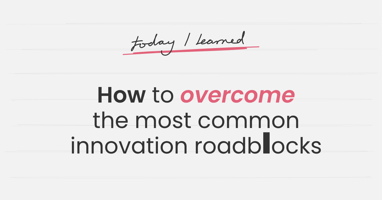Shhhh, there is a dirty little secret in idea management: just because you build and run idea campaigns doesn't mean you'll find good ideas. Yes, believe it or not, this happens quite often. Not every idea campaign yields implementable ideas. This is typically not a failure of the tool, but a failure in the processes surrounding the tool. Let's discuss a few examples.
Campaign Structure/Problem Definition
You've heard the expression “you get what you ask for.” This is very applicable to idea campaigns. A well thought-out and structured campaign is paramount to a success. The first thing is defining what you are trying to achieve. At the end of the campaign, what would you like to have as a result? It's not just three good ideas! What is it about the ideas that make them good? Is it uniqueness to market? How do you define uniqueness? Is it low implementation cost? How low is low? Is it average cost or total cost? You get the idea (excuse the pun). Define your success criteria and the attributes or qualities you're looking for in good idea. Communicate this to the audience in your campaign definition.
Defining Your Problem or Opportunity
When defining your problem or opportunity, narrow your scope. Don't just say you want to reduce costs. Rather, break your problem or opportunity into pieces that are either easy to accomplish or provide the most immediate impact. Pick one for the campaign topic, let's say reduce our “energy costs.” Keep in mind, that you can always run supplemental campaigns that address the other cost drivers you have identified as important. The goal should be to be as crisp as possible with a topic, so the audience can focus their creativity on tackling this one issue.
Broad and unclear problem statements lead to ideas that have nothing to do with what you're trying to achieve and therefore waste everyone's time. So don't just say you want to reduce energy costs. Be as laser-focused as possible in explaining what you want the audience to ideate on. For example: “We are looking to reduce our energy expenses by 30% at our south Georgia facility by FY2016. We are specifically focusing on our refrigeration expenses for our peach and orange markets. We are not looking for ideas associated with alternative energy sources at this time.” This is a very clear and precise statement. However, it still allows the audience enough room to explore and be creative.
Audience Selection
Speaking of the audience, this another crucial aspect of a successful campaign. You want to make sure you invite people who can actually help you solve the problem. Inviting everyone is not always the best approach. For example, inviting me to a campaign with a topic focused on quantum physics is most certainly not a fruitful endeavor. However, inviting all physicists and engineers in your company would be. I'm not saying throwing in few a wild-card creative participants is a bad idea, but your focus should be on people who have the experience and insights that can actually help. This may be ten people or it may be 10,000. It's not so much about quantity as it is relevance and diversity of thought.
Audience Creativity
While we're on the topic of audience, let's discuss the magic sauce behind idea campaigns, creativity! It's a common belief that everyone has a degree of creativity inside of them, some more than others, but none the less everyone has some. This does not mean the audience can turn that creativity on whenever you need it or they have the skill set to apply creativity to your challenge. I suggest you help.
Foremost, invite them to be creative in your challenge definition! This might sound silly, but some organizations have cultures that suppress creativity. Present your challenge in a creative way. Perhaps reverse the assumptions. For example, instead of assuming refrigeration expenses are high as a result of the energy consumption, tell the audience to assume energy consumption is low. Reversing assumptions is a common creative problem solving approach. Another approach is breaking down barriers, for example though you're interested in the peach and orange markets, invite the audience to break down that artificial barrier and explore how refrigeration is used in other markets and apply that back your challenge.
When to Run
Another important factor is when you run your campaign. Just because you have a tight time-line does not mean the audience can drop what they are doing and participate. You need to consider the availability of your audience as a whole and adjust your launch accordingly, particularly during heavy vacation seasons or corporate cycles like budget planning. You may want to shorten or increase the number of days you leave the campaign open also.
Consider all of the above when you're ready to start planning your next idea campaign to increase your likelihood of finding some good ideas. What are other suggestions would you add?





